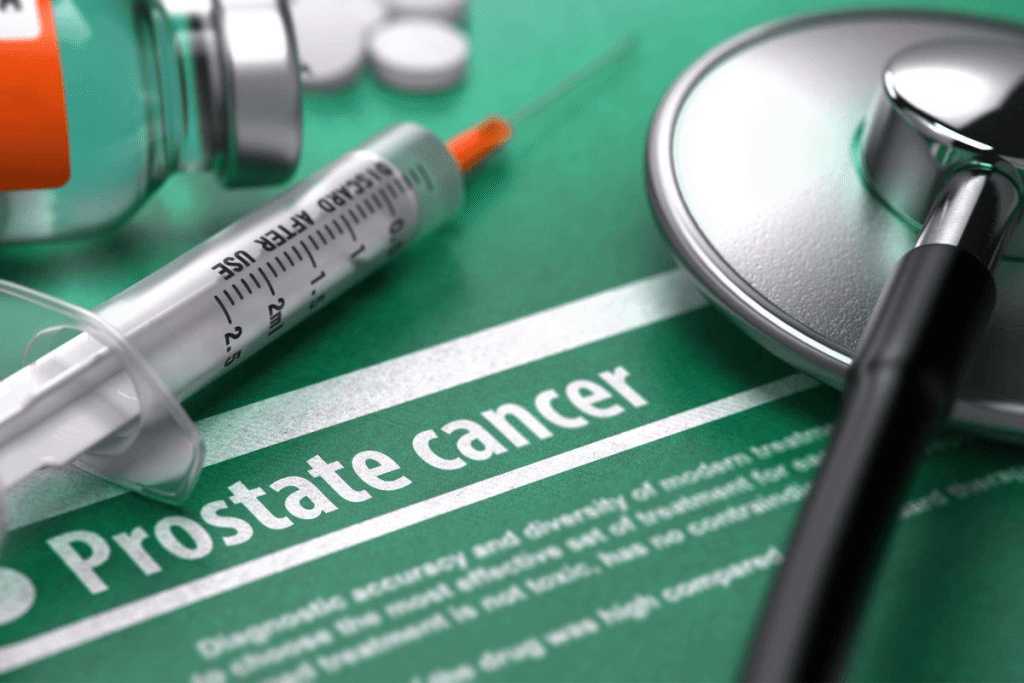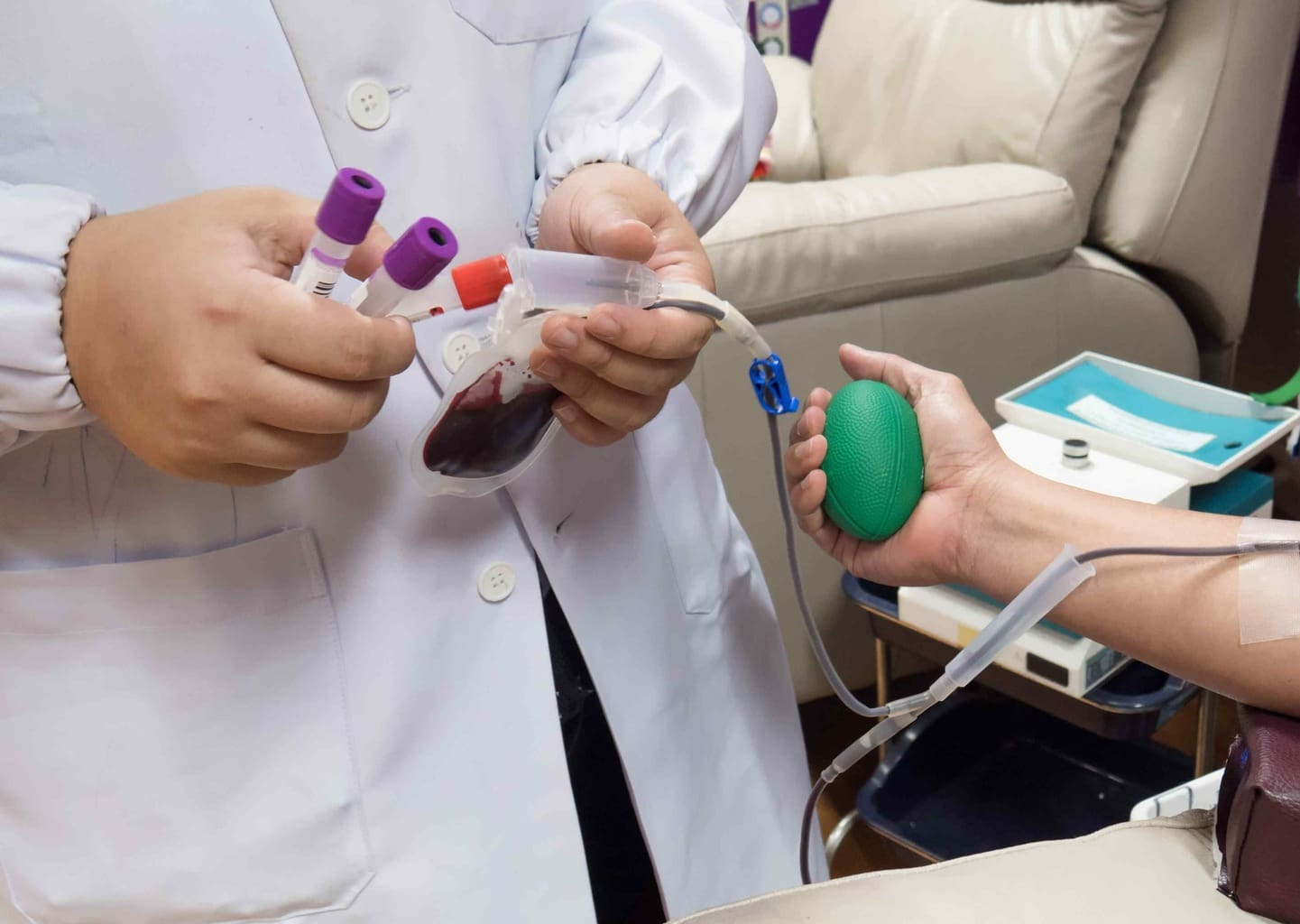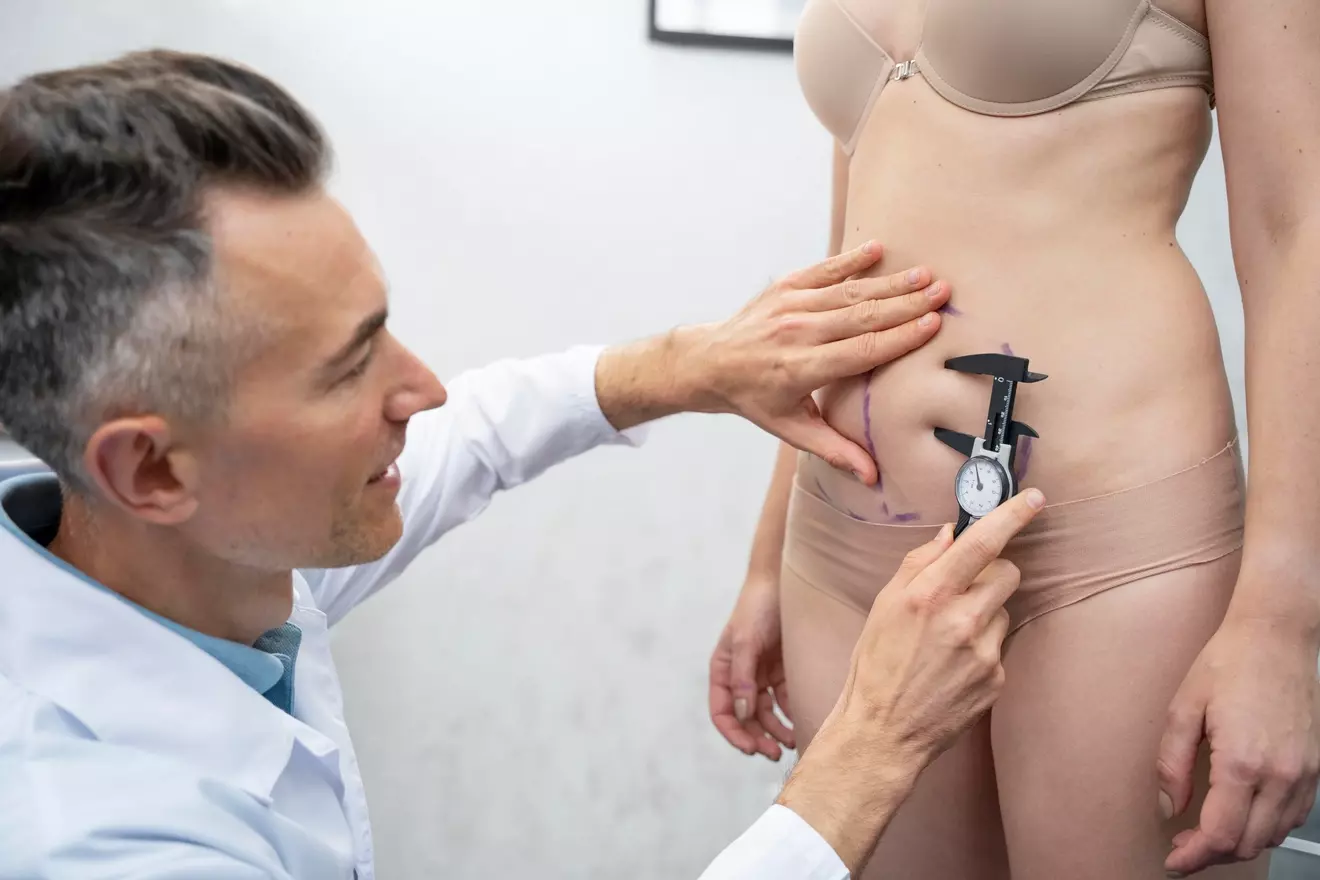Last Updated on November 26, 2025 by Bilal Hasdemir

Benign Prostatic Hyperplasia (BPH), also known as an enlarged prostate, affects millions of men and becomes more common with age. Understanding BPH is essential to managing its effects and maintaining overall prostate health.
As men get older, the prostate gland can enlarge, leading to uncomfortable urinary symptoms. The big question many ask is whether reversing enlarged prostate is possible. Studies show that with proper lifestyle changes, diet adjustments, and medical treatments, reversing enlarged prostate symptoms and improving quality of life are achievable goals.
Key Takeaways
- Benign Prostatic Hyperplasia (BPH) is a common condition among aging men.
- Understanding BPH is key to managing its symptoms.
- Lifestyle changes can help ease BPH symptoms.
- There are many treatments for an enlarged prostate.
- Early diagnosis is important for managing BPH effectively.
Understanding Benign Prostatic Hyperplasia (BPH)
It’s important for men to know about Benign Prostatic Hyperplasia (BPH). This condition, also known as an enlarged prostate, affects many men. It makes it hard to urinate and can really lower your quality of life.
What Is an Enlarged Prostate?
The prostate gland is a small, walnut-sized organ. It surrounds the urethra, the tube urine flows through. When the prostate gets bigger, it can block urine flow. This is not cancer but can cause a lot of discomfort.
Common Symptoms of BPH
Symptoms of BPH vary but often include:
- Weak or interrupted urine flow
- Frequent urination, often at night
- Difficulty starting to urinate
- Dribbling at the end of urination
- Incomplete bladder emptying
These symptoms can really affect a man’s life. Getting diagnosed and treated early is key.
Prevalence and Risk Factors
BPH is common in older men. The risk factors are:
- Age: The risk goes up after 40.
- Family History: If your family has BPH, you’re more likely to get it.
- Lifestyle Factors: Being overweight, not exercising, and certain diets can also increase your risk.
Knowing these risk factors can help catch BPH early. This makes managing it easier.
The Science Behind Prostate Enlargement
To understand prostate enlargement, we must look at hormonal, age-related, and genetic factors. Benign Prostatic Hyperplasia (BPH) affects millions of men, mainly as they get older.
Hormonal Factors in Prostate Growth
Hormonal changes are key in BPH development. Dihydrotestosterone (DHT), a testosterone derivative, greatly contributes to prostate growth. Studies show DHT is the main hormone driving prostate enlargement.
Testosterone and estrogen levels also matter. As men age, testosterone drops, but estrogen might stay the same or rise. This can lead to prostate growth.
Age-Related Changes
Age is a big risk factor for BPH. It’s rare in men under 40 but affects about 50% of men by 60. By 85, nearly 90% are affected.
With age, hormonal and cellular changes in the prostate occur. These changes cause the prostate to grow, leading to BPH symptoms.
Genetic Predisposition
Genetics also play a big part in BPH. Men with a family history of prostate issues are more likely to get it. Research shows genetics can affect how the prostate reacts to hormones, raising BPH risk.
“Men with a first-degree relative (father or brother) diagnosed with BPH are at a significantly higher risk of developing the condition themselves, highlighting the importance of genetic factors.”
Knowing these genetic factors helps identify men at risk. It can guide preventive steps or early treatments.
Diagnosing an Enlarged Prostate
Doctors use different methods to find out if a prostate is enlarged. This is key to picking the right treatment for BPH.
Physical Examination
A physical check is the first step to find an enlarged prostate. The doctor might do a digital rectal exam (DRE). This means they put a gloved finger into the rectum to feel the prostate.
Laboratory Tests
Labs are important for diagnosing and managing BPH. Here are some tests they might do:
- Prostate-specific antigen (PSA) test: Checks PSA levels in the blood, which can be high in prostate issues.
- Urinalysis: Looks for blood, infection, or other problems in the urine.
- Serum creatinine test: Checks kidney function, which can be affected by BPH.
| Laboratory Test | Purpose |
| PSA Test | Measures PSA levels in the blood |
| Urinalysis | Tests for urinary abnormalities |
| Serum Creatinine Test | Assesses kidney function |
Imaging Studies
Imaging tests help look at the prostate and urinary tract. Some tests include:
- Transrectal ultrasound (TRUS): Uses sound waves to make images of the prostate.
- Magnetic resonance imaging (MRI): Gives detailed pictures of the prostate and nearby tissues.
Urodynamic Tests
Urodynamic tests check how well the bladder and urethra work. They help find out if there’s urinary retention or other BPH symptoms.
Tests like uroflowmetry measure urine flow rate. Post-void residual (PVR) tests check how much urine is left in the bladder after you pee.
Can Prostate Enlargement Be Cured Permanently?
The idea of curing prostate enlargement is complex. Treatments can help a lot, but a permanent cure depends on many things. These include how bad the condition is and the treatment used.
Defining “Cure” vs. “Management”
A “cure” means the condition is gone for good. “Management” means controlling symptoms and improving life quality. For BPH, managing symptoms is often the main goal. It’s hard to get rid of the enlarged prostate completely.
A urologist says, “We can’t always ‘cure’ BPH. But we can manage its symptoms and improve patients’ lives with different treatments.”
Realistic Expectations for Treatment Outcomes
How well treatments work for an enlarged prostate varies. Medicines like alpha-blockers and 5-alpha reductase inhibitors help a lot. Sometimes, procedures or surgery are needed for the best results.
- Medications can reduce symptoms and improve quality of life.
- Minimally invasive procedures offer quicker recovery times.
- Surgical options can provide long-term relief.
It’s important for patients to have realistic hopes about treatment results. They should talk about their specific situation with their doctor.
“The key to successful BPH management is understanding the available treatment options and tailoring the approach to the individual patient’s needs.”
Factors Affecting Treatment Success
Many things can affect how well BPH treatment works. These include how bad the symptoms are, overall health, and sticking to the treatment plan. Making lifestyle changes, like eating better and being more active, can also help.
Sticking to medication and going to follow-up appointments are key for the best results.
By knowing these factors and working with healthcare professionals, men can manage their BPH well. This improves their quality of life.
Reversing Enlarged Prostate: Medical Approaches

Medical treatments are key in managing enlarged prostate symptoms. Various medications help ease the discomfort of Benign Prostatic Hyperplasia (BPH).
Alpha-Blockers
Alpha-blockers relax muscles in the prostate and bladder neck. This makes it easier to urinate. They are often the first treatment for BPH symptoms. Terazosin and doxazosin are common alpha-blockers.
These medications start working quickly. You may feel relief in a few days to a week.
5-Alpha Reductase Inhibitors
5-alpha reductase inhibitors shrink the prostate gland. This improves urine flow and lowers the risk of complications. Finasteride and dutasteride are examples.
These medications take several months to show results.
Combination Therapy
For some, combining alpha-blockers and 5-alpha reductase inhibitors is recommended. This mix can be more effective than one medication alone. It’s best for those with moderate to severe BPH symptoms.
Phosphodiesterase-5 Inhibitors
Phosphodiesterase-5 inhibitors, like tadalafil, are mainly for erectile dysfunction. But they also treat BPH symptoms, often when combined with other BPH medications.
It’s vital to talk to a healthcare provider about treating an enlarged prostate. They can choose the best medication or combination for you based on your symptoms and health.
Lifestyle Modifications for Prostate Health

Making lifestyle changes is key to managing benign prostatic hyperplasia (BPH). Healthy habits can improve prostate health and quality of life.
Exercise and Physical Activity Benefits
Regular exercise is vital for prostate health. It can lower BPH risk and ease symptoms. Men who exercise often have smaller prostates.
Benefits of Exercise for Prostate Health:
- Reduces the risk of BPH
- Improves urinary flow
- Enhances overall physical and mental well-being
Weight Management Strategies
Keeping a healthy weight is key for prostate health. Excess weight, like belly fat, raises BPH risk. Eating right and exercising can help maintain a healthy weight.
Effective Weight Management Tips:
- Follow a balanced diet rich in fruits, vegetables, and whole grains
- Engage in regular physical activity, such as brisk walking or cycling
- Monitor calorie intake and avoid high-calorie foods
Bladder Training Techniques
Bladder training improves bladder control and reduces frequency. It involves gradually increasing time between bathroom visits. This trains the bladder to hold more urine.
| Bladder Training Tips | Description |
| Start with small intervals | Begin by delaying urination by 5-10 minutes and gradually increase the time |
| Keep a bladder diary | Record urination patterns to identify triggers and track progress |
| Practice relaxation techniques | Deep breathing or meditation can help reduce urinary urgency |
Stress Reduction Methods
Chronic stress worsens BPH symptoms. Reducing stress improves well-being. Activities like meditation, yoga, or deep breathing help.
Stress Reduction Techniques:
- Meditation and mindfulness practices
- Yoga and tai chi
- Deep breathing exercises
Can Diet Reduce Prostate Size?
Research shows that some diets can help shrink the prostate and boost health. It’s clear that what we eat affects our prostate size and health. This is true for benign prostatic hyperplasia (BPH).
Anti-Inflammatory Foods
Eating foods that fight inflammation can ease prostate symptoms. Salmon and sardines are full of omega-3s, which reduce swelling. Also, eating berries and leafy greens can lower oxidative stress.
Foods That Shrink Enlarged Prostate
Some foods might help make the prostate smaller. Tomatoes are packed with lycopene, which is good for the prostate. Green tea and pomegranate juice also have antioxidants that could help.
Foods to Avoid
Some foods can make prostate problems worse. Try to cut down on caffeine and alcohol because they can bother the bladder and prostate. Also, eating less processed meats and dairy might help symptoms.
Hydration and Prostate Health
Drinking enough water is key for prostate health. It helps remove toxins and keeps the urinary system working right. Aim for at least eight glasses of water a day, but your needs might change based on how active you are and where you live.
Natural Supplements and Herbal Remedies
Natural supplements are gaining attention for helping with BPH symptoms. Many men are exploring options beyond traditional meds. They’re turning to herbal remedies that have been around for centuries.
Saw Palmetto Effectiveness
Saw palmetto is a top herbal choice for enlarged prostate. It’s thought to block the hormone DHT, which can make the prostate grow. But, studies on saw palmetto show mixed results. Some say it helps with urinary issues, while others find no real benefit.
Beta-Sitosterol Benefits
Beta-sitosterol is a plant sterol that might help with BPH symptoms. Research points to better urine flow and less severe symptoms. It’s believed to reduce inflammation and boost prostate health.
Pygeum and Prostate Health
Pygeum comes from the African cherry tree bark. It’s been used for urinary issues linked to an enlarged prostate. Pygeum may have anti-inflammatory effects and help with nighttime urination.
Rye Grass Pollen Extract
Rye grass pollen extract is another natural option for BPH symptoms. Some studies suggest it can lessen frequent urination and improve life quality for men with enlarged prostate.
Even though these natural options seem promising, always talk to a healthcare provider before using them. They can affect other meds and might not be right for everyone.
Can Prostate Enlargement Be Reversed Naturally?
Many men are looking into natural ways to shrink their prostate. They want to avoid the side effects of traditional treatments. They’re seeking a more natural way to manage BPH.
Success Rates of Natural Approaches
Studies show natural methods for BPH are promising. Some natural supplements and lifestyle changes can help symptoms and even shrink the prostate.
- Dietary Changes: Eating foods full of antioxidants and omega-3s can fight inflammation and boost prostate health.
- Herbal Supplements: Saw palmetto and beta-sitosterol can improve urinary symptoms linked to BPH.
- Lifestyle Modifications: Regular exercise, less stress, and bladder training can also help prostate health.
Combining Natural Methods with Medical Treatment
Some men find the best results by mixing natural methods with medical treatments. This approach can make BPH symptoms less severe than either method alone.
It’s important to talk to a doctor before starting new supplements or big lifestyle changes, if you’re already getting medical treatment for BPH.
| Treatment Approach | Potential Benefits |
| Natural Supplements | Less symptoms, fewer side effects |
| Medical Treatment | Good symptom control, proven to work |
| Combination Therapy | Better symptom relief, might need less medicine |
Timeline for Natural Treatment Results
The time it takes to see results from natural BPH treatments varies. Some men see improvements in weeks, while others may take months.
Being patient and consistent is key when using natural methods for prostate enlargement. It’s also important to keep track of progress and adjust as needed, with a doctor’s help.
Minimally Invasive Procedures
Medical technology has improved a lot. Now, there are many ways to treat an enlarged prostate without big surgery. This is good news for men with BPH.
Transurethral Microwave Therapy (TUMT)
TUMT uses microwave energy to kill extra prostate tissue. It’s done in a doctor’s office and helps a lot with BPH symptoms.
Benefits of TUMT include: it needs little anesthesia, you recover fast, and it can be done in a doctor’s office.
Transurethral Needle Ablation (TUNA)
TUNA uses radiofrequency to shrink the prostate. It’s usually well-liked and helps with urine flow.
Key aspects of TUNA: it’s done with local anesthesia, and symptoms get better fast.
Prostatic Urethral Lift (UroLift)
The UroLift system is a small implant that helps with urine flow. It lifts the prostate tissue out of the way.
Advantages of UroLift: it works fast, you don’t need to take much time off, and it doesn’t hurt your sex life.
Water Vapor Therapy (Rezş«m)
Rezş«m therapy uses steam to shrink the prostate. It kills cells and makes the prostate smaller.
Notable benefits: it’s quick, done with local anesthesia, and works well over time.
These new treatments give men with BPH many choices. Each has its own good points. Always talk to a doctor to find the best option for you.
Surgical Options for Enlarged Prostate Treatment
Surgical treatments for BPH have evolved, giving patients many options to ease symptoms. When other treatments don’t work, surgery is a good choice.
Transurethral Resection of the Prostate (TURP)
TURP is a well-known and effective surgery for an enlarged prostate. It removes parts of the prostate that block urine flow. This surgery greatly improves symptoms and urine flow.
But, it can cause bleeding, infection, and incontinence. New techniques have made these risks lower, making TURP a safe choice for many.
Laser Therapy Options
Laser therapy is a less invasive option than TURP. It uses laser energy to remove prostate tissue. This method is less risky and leads to quicker recovery.
It’s great for patients with health issues or those on blood thinners. Laser therapy is a good choice for many.
Open Prostatectomy
Open prostatectomy is more invasive. It’s for men with very large prostates or those who didn’t respond to other treatments. It involves removing part of the prostate through an incision.
Though effective, it’s riskier and takes longer to recover than other surgeries.
Robotic-Assisted Prostatectomy
Robotic-assisted prostatectomy uses advanced technology for precise surgery. It’s less invasive, leading to quicker recovery and fewer complications.
The robotic system gives surgeons better control and vision. This allows for more accurate removal of prostate tissue.
| Surgical Procedure | Invasiveness | Recovery Time | Potential Complications |
| TURP | Moderate | Several weeks | Bleeding, infection, incontinence |
| Laser Therapy | Less invasive | Fewer days to weeks | Temporary dysuria, infection |
| Open Prostatectomy | More invasive | Several months | Bleeding, infection, incontinence, erectile dysfunction |
| Robotic-Assisted Prostatectomy | Minimally invasive | Fewer weeks | Potential for fewer complications due to precision |
A study in the Journal of Urology says, “The choice of surgery for BPH depends on prostate size, patient health, and surgeon skill.”
“Surgical treatment for BPH is highly effective in improving symptoms and quality of life for men with moderate to severe lower urinary tract symptoms.”
In conclusion, the variety of surgical options for enlarged prostate allows for tailored treatments. These treatments can greatly improve patient outcomes.
Can Prostate Enlargement Return After Treatment?
Prostate enlargement treatment can show good results, but symptoms might come back. Treatments for Benign Prostatic Hyperplasia (BPH) include medicines or surgery. Each has its own success rate and chance of symptoms returning.
Recurrence Rates After Medical Treatment
Doctors often use medicines to treat BPH. These medicines help, but symptoms can come back. This is more likely if the cause of BPH isn’t fully treated.
Recurrence rates vary: Studies show that symptoms can return in 10% to 30% of people. This can happen within 2-5 years, depending on the medicine and the person.
Recurrence Rates After Surgical Intervention
Surgeries like Transurethral Resection of the Prostate (TURP) and laser therapy are more lasting treatments. But, symptoms can come back even after surgery.
Long-term outcomes: Surgeries tend to have lower rates of symptom return than medicines. For example, TURP might need to be done again in 5-15% of people within 10 years.
Long-term Management Strategies
Managing BPH long-term means making lifestyle changes, regular check-ups, and sometimes ongoing treatment. Here are some strategies:
- Lifestyle changes: Eating right, exercising, and training your bladder.
- Regular follow-ups: Keeping an eye on your prostate and adjusting treatment as needed.
- Medication management: Changing or keeping medicines based on how well they work.
| Management Strategy | Description | Benefits |
| Lifestyle Changes | Dietary adjustments, exercise, and bladder training | Improved symptom control, overall health benefits |
| Regular Follow-Ups | Monitoring prostate health and adjusting treatment | Early detection of complications, tailored treatment plans |
| Medication Management | Continuing or adjusting medications based on symptoms | Effective symptom control, reduced risk of complications |
Knowing the chance of symptoms coming back and using long-term strategies can help. This way, people with BPH can manage their symptoms better and live a better life.
Emerging Therapies and Research
New treatments are changing how we treat Benign Prostatic Hyperplasia (BPH). In recent years, urology has made big strides. This brings new hope to men with an enlarged prostate.
Prostatic Artery Embolization
Prostatic artery embolization (PAE) is a new, less invasive procedure. It blocks blood flow to the enlarged prostate. This can shrink the prostate and ease symptoms.
PAE is known for being less risky than traditional surgery. It also might lead to faster recovery times.
Aquablation Therapy
Aquablation therapy uses advanced technology to remove prostate tissue. It’s precise and aims to keep surrounding tissues safe.
The advantages of aquablation therapy include treating larger prostates well. It can also reduce symptoms without major side effects.
Stem Cell Research
Stem cell research could be a game-changer for BPH treatment. Scientists are looking into using stem cells to repair prostate tissue. This could offer a lasting solution.
Though early, stem cell therapy might change BPH treatment. It could tackle the condition’s root causes, not just symptoms.
New Medications in Development
The pharmaceutical world is working on new BPH treatments. These drugs target different parts of the condition, like prostate size and urinary issues.
New medications could manage symptoms better with fewer side effects. This could greatly improve life for men with BPH.
Prevention and Proactive Management
Proactive steps can greatly improve your prostate’s health. Understanding prevention and early intervention can lower BPH symptom risks.
Early Intervention Strategies
Early action is key for prostate health. It combines medical care and lifestyle changes. Monitoring prostate health early can spot issues before they worsen.
- Regular check-ups with a healthcare provider
- Awareness of family medical history
- Making informed lifestyle choices
Regular Screening Recommendations
Regular screenings are essential for prostate health. The American Urological Association suggests talking to your doctor about screening by age 40.
Screening tests may include:
- Prostate-Specific Antigen (PSA) test
- Digital Rectal Examination (DRE)
Lifestyle Habits for Prevention
Some lifestyle choices can help your prostate. A healthy diet and exercise are key. They can make a big difference.
- Eating a balanced diet
- Engaging in regular exercise
- Maintaining a healthy weight
- Managing stress effectively
Adding these habits to your life can help keep your prostate healthy. It also lowers BPH risk.
When to Seek Medical Attention
It’s important to know when to see a doctor for BPH. Men with enlarged prostate symptoms should watch for warning signs. This can help avoid serious problems and improve their life quality.
Warning Signs and Complications
Some symptoms and complications from BPH need quick medical help. These include:
- Severe trouble urinating or not being able to urinate
- Painful urination
- Blood in the urine
- Frequent urinary tract infections
- Severe pain in the lower abdomen or back
If you notice any of these signs, see a doctor right away. Quick action can stop serious issues and help treatment work better.
Finding the Right Specialist
Finding the right doctor for BPH is key. Start by talking to:
- A urologist, who knows a lot about urinary and reproductive issues
- A primary care doctor, who can send you to a specialist if needed
Make sure your specialist knows how to treat BPH. Look at their qualifications, read what others say, and ask about their methods.
Questions to Ask Your Doctor
Ask the right questions when you see your doctor. This helps you understand your situation and options. Consider asking:
- How bad is my BPH, and what treatments do you suggest?
- What are the risks and benefits of each treatment?
- Are there lifestyle changes that can help my symptoms?
- What are the chances of problems or it coming back after treatment?
Being informed and active can greatly improve your treatment and health.
Conclusion
Managing Benign Prostatic Hyperplasia (BPH) requires a mix of lifestyle changes, medical treatments, and sometimes surgery. Knowing the different treatment options helps people make better choices for their care.
Lifestyle changes are key in managing BPH. This includes eating right, staying active, and learning bladder training. Medical treatments include alpha-blockers, 5-alpha reductase inhibitors, and procedures like transurethral microwave therapy and prostatic urethral lift.
In summary, treating an enlarged prostate needs a plan that fits each person. This plan considers how bad the symptoms are, overall health, and what the person prefers. With a good plan, people can feel better, live better, and even get better.
Regular check-ups and acting early are important to avoid problems and get the best results in managing BPH. By staying informed and working with healthcare providers, people can manage their prostate health well.
FAQ
Can prostate enlargement be cured permanently?
Finding a “cure” might be hard. But, you can manage and even reverse an enlarged prostate with the right treatments and lifestyle changes.
What are the natural ways to shrink prostate?
Eating right, exercising, and reducing stress are natural ways. Also, herbal remedies like saw palmetto and beta-sitosterol can help.
Can benign prostatic hyperplasia go away on its own?
Sometimes, mild BPH symptoms can get better without treatment. But, it’s best to see a doctor for advice and a check-up.
What medications can reverse an enlarged prostate?
Alpha-blockers and 5-alpha reductase inhibitors can manage symptoms and shrink the prostate.
Can diet reduce prostate size?
Eating a healthy diet with anti-inflammatory foods, fruits, and veggies can help symptoms and support prostate health.
Are there any foods that can shrink an enlarged prostate?
Yes, foods like tomatoes, green tea, and fatty fish can reduce inflammation and support prostate health.
How does exercise impact prostate health?
Exercise can improve symptoms, lower the risk of problems, and support prostate health.
Can herbal remedies help treat enlarged prostate?
Herbal remedies like saw palmetto and pygeum might help symptoms. But, their effectiveness can vary.
Can prostate enlargement be reversed naturally?
Natural methods can manage symptoms and possibly shrink the prostate. But, always talk to a doctor for advice.
What are the surgical options for treating enlarged prostate?
Surgical options include TURP, laser therapy, and open prostatectomy, among others.
Can prostate enlargement return after treatment?
Yes, it can come back after treatment. Long-term management is key to prevent or lessen recurrence.
What are the emerging therapies for enlarged prostate?
New therapies include prostatic artery embolization, aquablation therapy, and stem cell research. They show promise in treating enlarged prostate.
How can I prevent prostate enlargement?
A healthy lifestyle, including a balanced diet, exercise, and stress reduction, can help prevent prostate enlargement.
When should I seek medical attention for prostate issues?
If you have trouble urinating, pee too often, or it hurts, see a doctor for help and advice.
References
- Murad, L. (2025, July 24). The current state of artificial intelligence for benign prostate hyperplasia: Enhancing diagnosis and treatment. PubMed. https://pubmed.ncbi.nlm.nih.gov/40713289/






